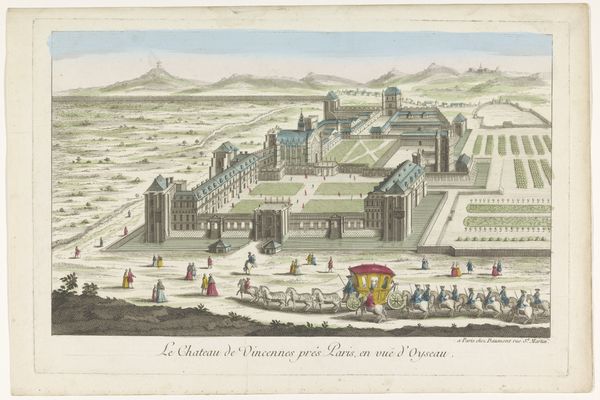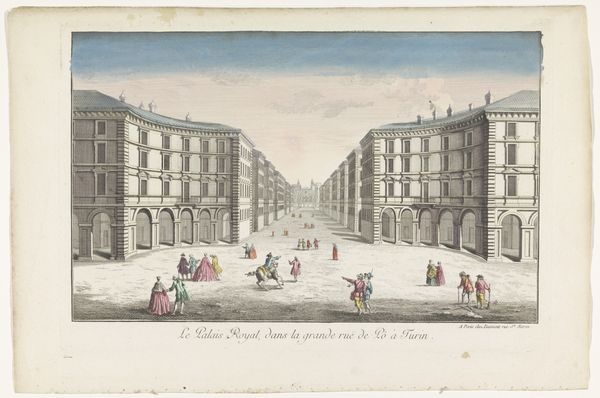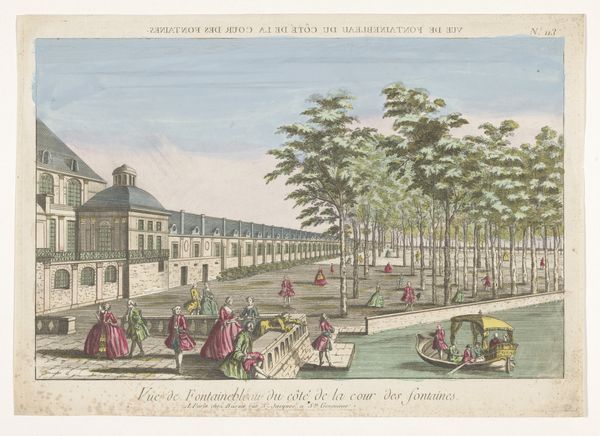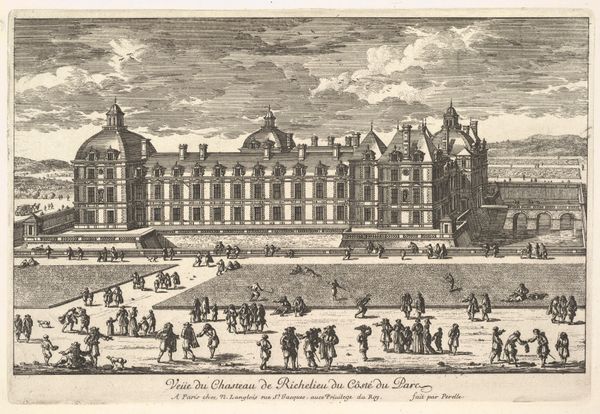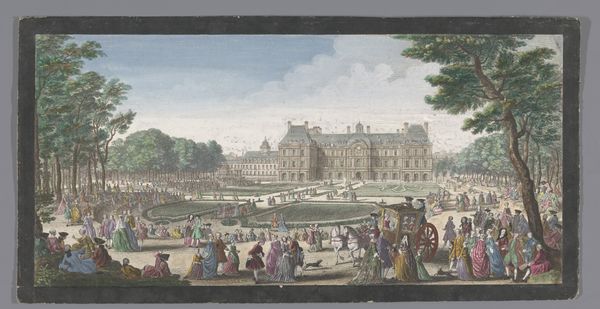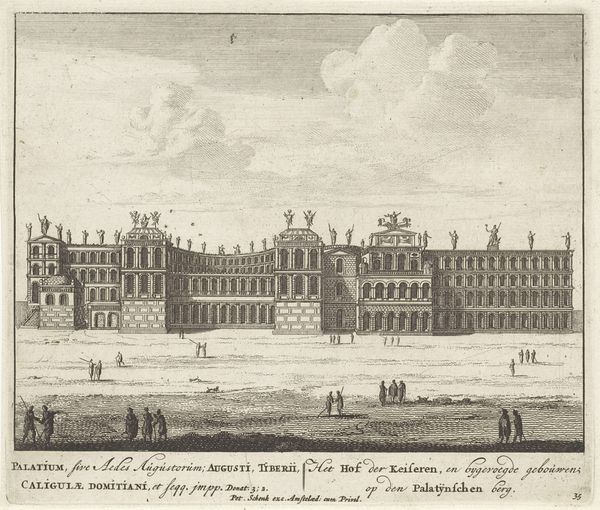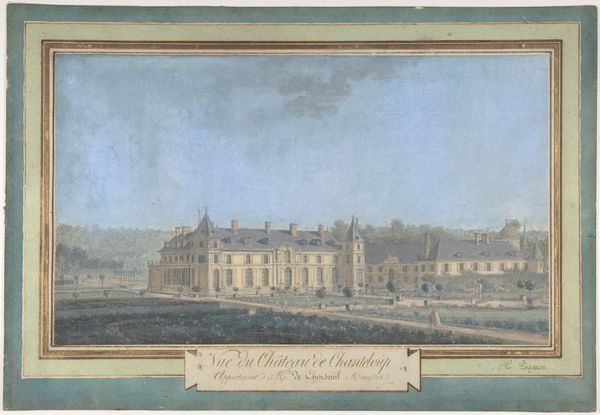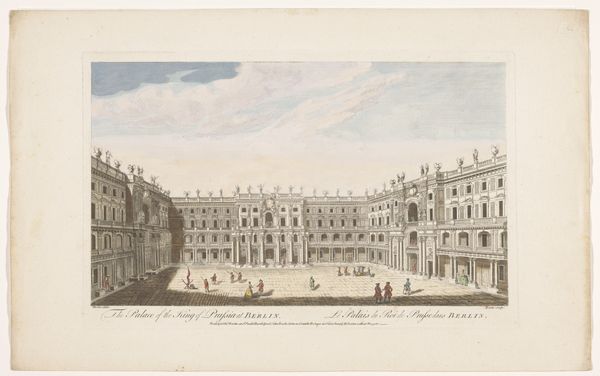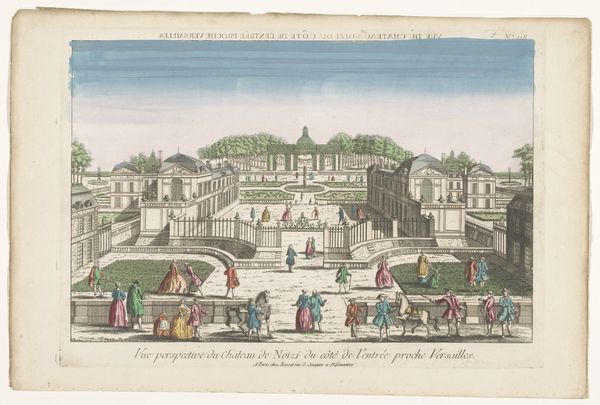
print, etching
#
baroque
#
fancy-picture
# print
#
etching
#
landscape
#
perspective
#
cityscape
Dimensions: height 298 mm, width 424 mm
Copyright: Rijks Museum: Open Domain
Curator: What a delightful print! This is a “View of the Château de Saint-Germain-en-Laye,” created in the 18th century. The print uses etching techniques and would have been widely distributed. Editor: It's so controlled, almost sterile. Look at that rigid symmetry! It feels like a stage set, the figures mere decorations against this imposing architecture. Curator: Well, consider that prints like these were often commissioned. They acted as a kind of promotional material, showing off the power and sophistication of the French monarchy and their construction projects. Think about the labor involved: the architectural planning, the gardening, even the clothing of those strolling through the gardens. It speaks volumes about resource allocation and a system of production meant to impress. Editor: Absolutely, and the figures! They’re deliberately placed, enacting a leisure that, for the vast majority, was unimaginable. The print isn’t just representing a place; it’s staging an ideology. It screams of power, of social stratification, of a visual language carefully constructed to perpetuate hierarchy. And the sharp perspective is just the technique to amplify this. Curator: It also offers valuable insight into the skills required to produce such an image at that time. The meticulous hand-rendering of architectural details, the chemical processes of etching, the socio-economic structures that allow for artists to devote themselves to printmaking rather than manual labor. This piece reflects access and privilege. Editor: It's a very persuasive representation, though I would ask about the role of color, with its artificial light that gives the impression of a calm scene that hides other realities from that era, such as inequality or injustice. Curator: I see what you mean. Focusing on the material conditions and production processes lets us unpack so much about this society. Editor: And analyzing it through a social and historical lens unveils the ideologies at play, ensuring the picture doesn’t lull us into accepting that one-sided vision of grandeur without questioning it. Curator: It's all embedded right here in the image itself, from the pigment on the paper to the imagined lives of these tiny figures. Thank you. Editor: Indeed, it’s been fascinating to look closely together!
Comments
No comments
Be the first to comment and join the conversation on the ultimate creative platform.
